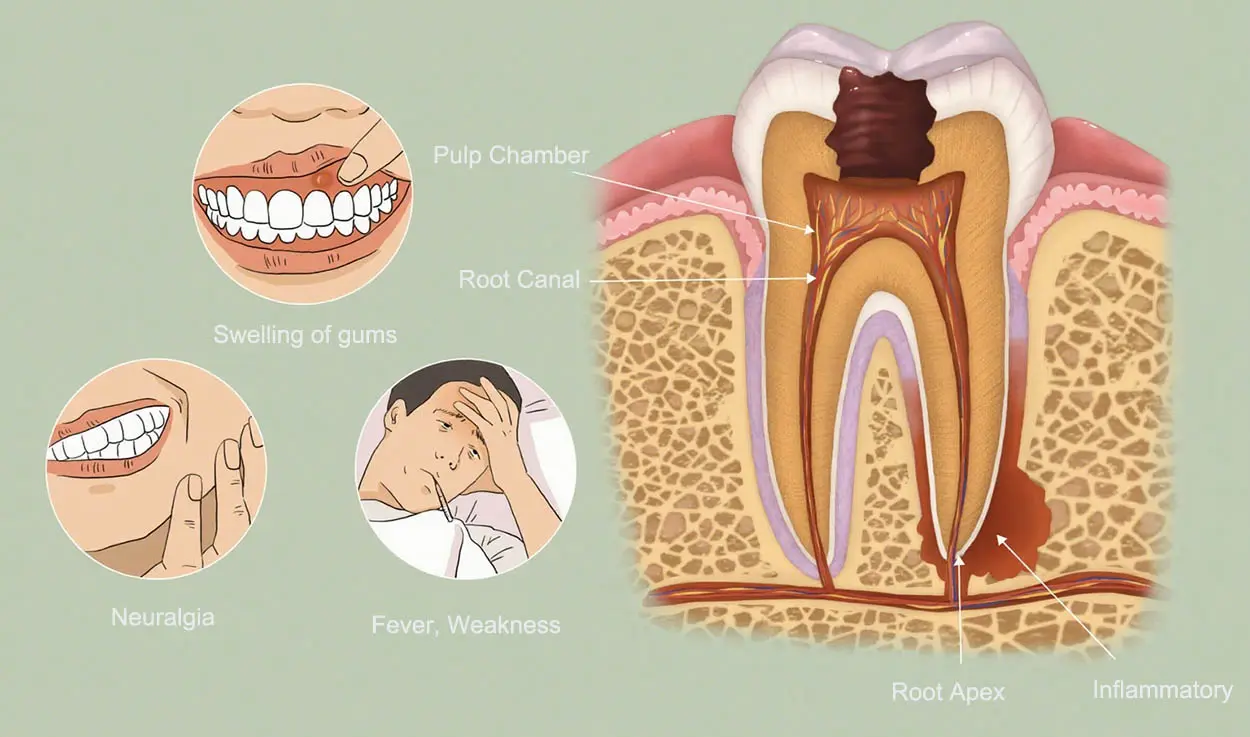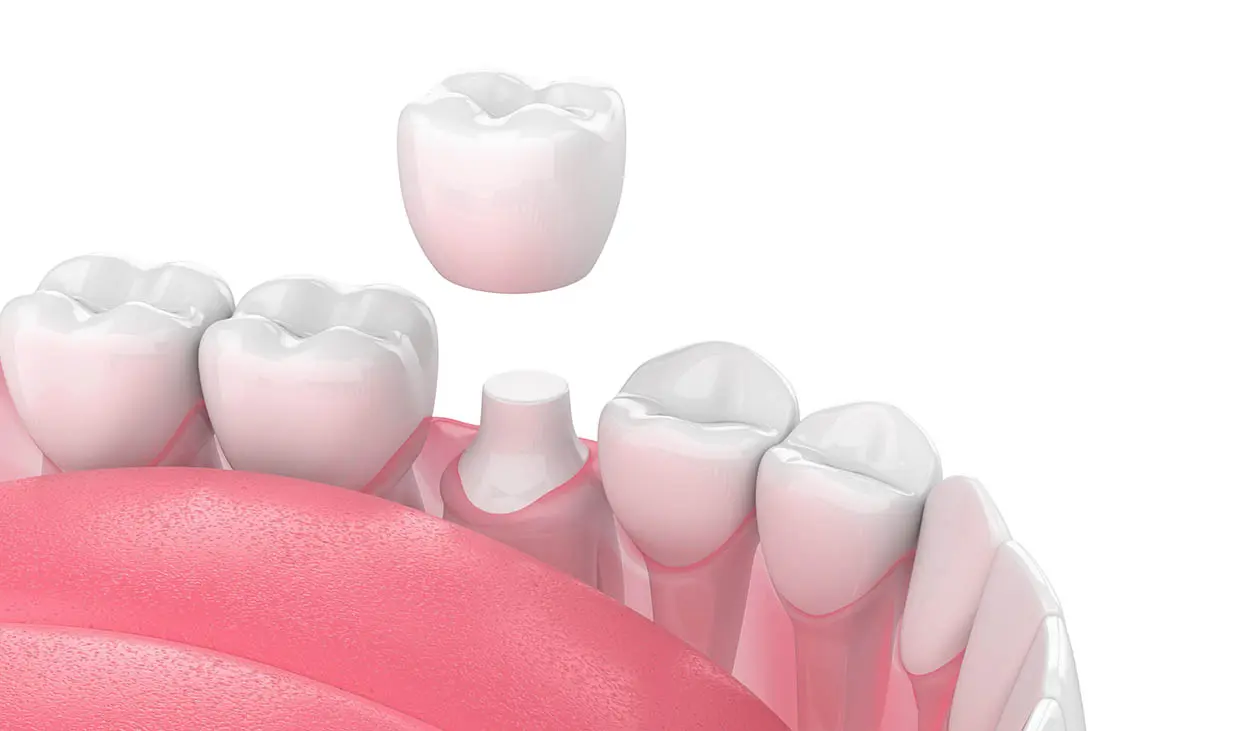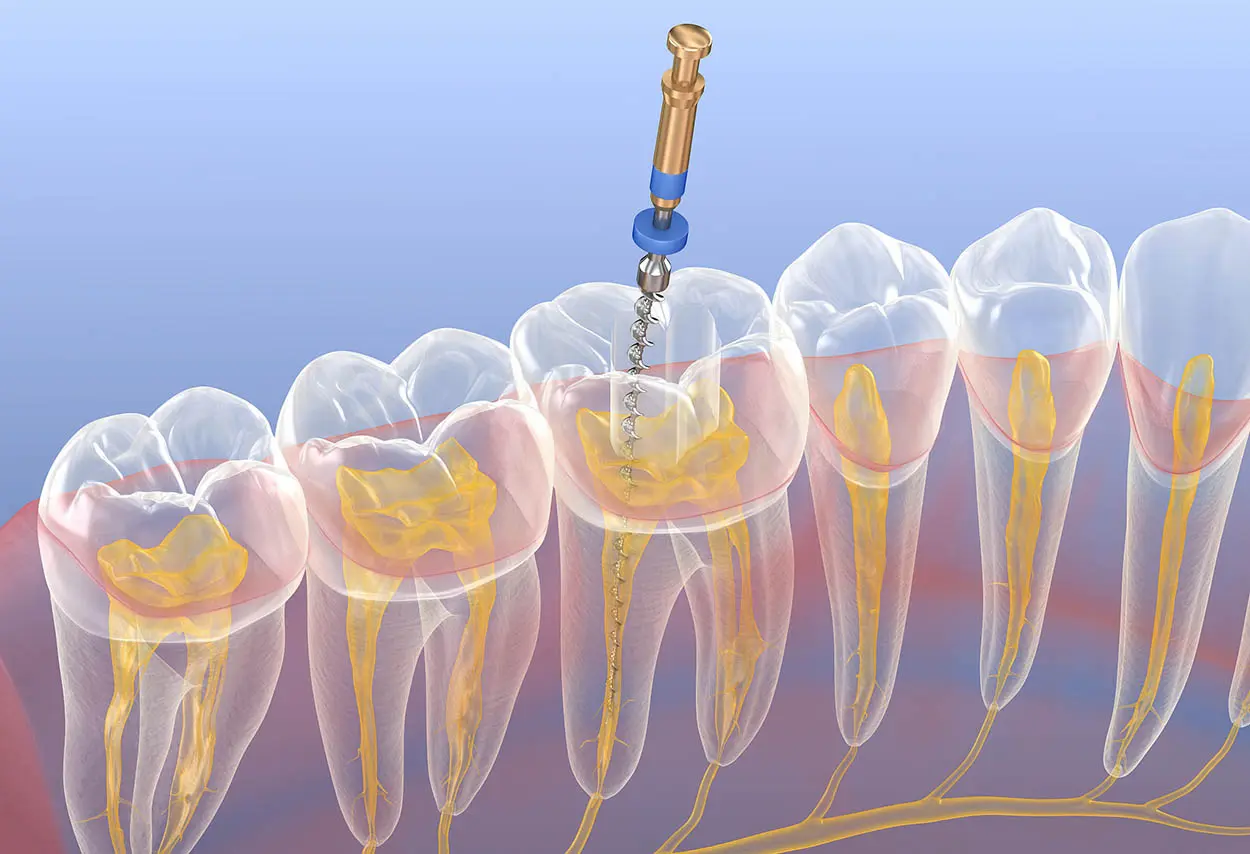1. What is the Root Canal Treatment?
Before we discuss root canal treatment, let’s learn about one part of the tooth – the “root canal”. So what is a root canal? They are actually the two foot-like parts of the tooth that we often see in pictures of teeth ? underneath. The inside of this area is actually hollow, and it is the “root canal” of the tooth. It is an extension of the dentin-covered pulp. The pulp is the innermost soft tissue of the tooth and contains blood vessels, nerves and immune cells. It provides nutrients to the tooth and also defends the tooth from bacterial viruses.
Root canal treatment is a treatment that is performed when the pulp becomes infected or even necrotic by removing the lesions in the root canal, killing the bacterial virus and then sealing it with a filling material. It is a dental procedure that removes infection and restores tooth function and oral health without extracting the tooth after a serious infection has occurred.
As mentioned earlier, the pulp is in the innermost part of the tooth and there are immune cells how can infection occur? Here we have to talk about a very familiar dental disease “tooth decay”. Tooth decay, also known as dental caries, causes holes to form in the teeth. If left untreated, it can penetrate deep into the dentin to reach the inside of the tooth, exposing the pulp to bacteria. Because the cavity cannot be effectively cleaned, over time it leads to a proliferation of bacteria and other microorganisms. By the time the immune cells are insufficient to remove these microorganisms, an infection is triggered. Of course, there are also infections that can be caused by physical damage to the tooth, and these require prompt root canal to stop further deterioration.
2. When is Root Canal Treatment Necessary?
The previous paragraph talked in detail about root canals and the causes of root canal infections. Let’s move on to explore when a root canal treatment is needed.
Root canals are needed when there is an infected pulp lesion or apical periodontitis. Pulp infection, as previously mentioned, is the destruction of dentin due to caries or physical damage to the tooth. Without the protection of dentin, the pulp is exposed to bacteria and becomes infected. So what is periapical infection? It is a secondary condition that occurs after a pulpal infection. When the inflammatory substances from the pulpal infection cannot be discharged from the tooth, they will overflow from the apical foramen, thus causing inflammation of the periapical tissues.
The main symptoms of periapical inflammation include severe pain at the root of the tooth, swelling of the gums, and in severe cases, even pus. Therefore, in order to save pain and remove inflammation, root canal treatment should be done in time.

3. Is it Painful to Have a Root Canal Done?
A big reason why many patients who need root canal treatment keep putting it off is because they are afraid that root canal treatment will be painful. This is especially true when you realize that the root canal preparation stage involves cutting through the tooth with a dental drill and then measuring the length of the root canal with a particularly thin and sharp root canal file. These operations sound like they would cause a lot of pain. In fact, these are self-induced scares.
Before you have a root canal treatment, your doctor will give you a local anesthetic. You will hardly feel any pain during the procedure, and there will be some mild pain at the end of the procedure when the anesthetic effect wears off. The doctor will also provide you with painkillers.
There’s an old Chinese saying, “Better a short pain than a long one”. If you keep putting off having a root canal, the more the pulp becomes infected, the more painful the toothache will be compared to having the surgery. And the longer you delay, the more severe the inflammation and the more severe the pain will be during the recovery phase after the surgery. Cases of particularly painful root canals are usually patients with severe infections that have triggered swollen and painful gums.
The average patient undergoing a root canal treatment is only mildly sore. Therefore you should trust your dentist after your dental checkup if he/she recommends you to have a root canal and get it done in time. Avoid unnecessary pain.

4. How Bad Does a Root Canal Hurt on a Scale of 1 to 10?
Your doctor will give you local anesthesia before the root canal treatment and you will not experience any pain during the procedure. The pain score is 0. After the procedure is over and the anesthesia wears off, you may experience mild and intermittent pain, depending on your individual situation. The pain score at this stage is about 1-4. If you can’t tolerate it, you can take the painkillers provided by your doctor. This stage lasts about 3-7 days. After a week the wound heals and the inflammation goes away you will have a healthy mouth again. As long as you can maintain hygienic oral habits, toothache is basically far away from you.
And how painful is it if you’re in a situation where you need a root canal and it’s not treated? I’ve seen this one before, where the pulp is severely infected and the inflammation attacks the gums causing pus and swelling. That pain score is at least a 7 or higher. As you can imagine, the gum nerve is so close to the head that its inflammation can cause a huge headache throughout. It even hurts so much that you can’t sleep. This pain will persist along with the inflammation and you will end up having to get a root canal to get rid of the inflammation.
| Pain Stage | Pain Score | Description |
|---|---|---|
| During Root Canal Procedure | 0 | No pain during the procedure due to local anesthesia. |
| Initial Post-Treatment (Anesthesia Wears Off) | 1-4 | Mild and intermittent pain, usually subsiding in 3-7 days. |
| Untreated Root Canal Infection | 7 or higher | Severe infection causing gum swelling and pus, persistent intense pain, affecting sleep. |
5. What is the Process of Root Canal Treatment?
Next comes the most important part of this article, the exact process of root canal treatment:
First, your dentist will perform a series of tests and take x-rays to see how the pulpitis is developing. Then a treatment plan will be developed in consultation with you. Then a local anesthetic is administered to the area of your tooth bed. Root canal treatment is divided into three steps:
5.1. Root canal preparation:
A dental drill is used to cut through the crown of the tooth to open the pulp chamber, the root canal channel is located, and the length of the root canal is measured with a root canal file. The infected, necrotic pulp tissue is then removed with a root canal instrument. X-rays are taken again to check the status of root canal preparation.
5.2. Root canal disinfection:
After removing the decayed tissues, disinfect the inside of the root canal with Endo lrrigation Needle and place anti-inflammatory medication. Finally, the crown is temporarily sealed and the patient waits for 1 week for follow-up. Depending on the recovery of the pulpal inflammation, this process is repeated 2-4 times. Once the inflammation is gone and oral health is restored the final step of root canal treatment is performed.
5.3. Root canal filling:
The final step of root canal treatment is performed when the inflammation has disappeared and oral health has returned without any discomfort. The root canal is completely sealed with a biocompatible material (e.g., Gutta Percha Points) along with resin to prevent re-infection.
This is the end of the root canal treatment. At this point, some patients are so anxious that they slap their thighs, where is the crown that you cut off with the dental drill in front of me? This is the end, so a big pit do not care? Haha, just kidding. The latter is the crown restoration, which is a combination of your own wishes and the dentist’s opinion. You can choose to have a filling or have an artificial crown placed over it.
After root canal treatment, the tooth loses its pulp supply of nutrients and can become weak. If your dentist advises you to make a crown, it is best that you listen to him. This will allow you to preserve your tooth longer while maintaining normal functionality.

6. Why is Root Canal Done in Multiple Sessions?
To figure this out, first we need to understand what the purpose of root canal treatment is? Root canal treatment is designed to eliminate inflammation in the pulp of the tooth to prevent the condition from worsening and leading to complete necrosis of the tooth requiring extraction. So how do you eliminate the inflammation? It is to remove the infected pulp, completely eliminate viruses, bacteria and other microorganisms inside, and finally close the root canal. Inflammation does not disappear immediately after all this is done, it needs to disappear slowly after the lesion is removed.
Depending on the severity of the inflammation, some bacteria will not be completely eliminated in a single session, which leads to the need to gradually eliminate them in several sessions. This is the main reason why root canal treatment have to be done in multiple sessions. If your inflammation is mild, then you will only need to remove the decayed tissue and disinfect it once before the root canal is filled and the treatment is complete. While some patients with severe inflammation will have to score multiple passes to remove and sterilize the decay. In short, the final step of root canal treatment should be done only after the inflammation is completely gone.
7. How Long Will a Tooth be Usable After Root Canal Treatment?
There is no specific value for the survival time of a tooth after root canal treatment. However, it is important to understand that a tooth after a root canal loses its nutrient supply and becomes weaker than a normal tooth. This is something that, if it is brought to your attention, you can pay more attention to your oral hygiene, not use it to chew on particularly hard things, and visit your dentist regularly. It may survive longer than normal teeth that have not had root canal treatment. So anyway, if we practice good hygiene and pay attention to our oral health, then our teeth can be with you for the rest of your life with or without root canal treatment.
8. What Should be Noted After the Treatment?
With the continuous improvement of root canal treatment technology, its success rate has exceeded 90%, becoming the most effective method of treating endodontics and periapical diseases.However, you can’t do whatever you want after root canal treatment, you should pay attention to the following matters:
- Regular follow-up: Follow your dentist’s advice and follow up on schedule. This is so that the dentist can observe the effect of the treatment and deal with any problems in time.
- Pay attention to your diet: After root canal treatment, the tooth loses its pulp to supply nutrients and becomes weaker. Avoid chewing too hard food and eat as little stimulating food as possible to prevent irritation and discomfort.
- Pay attention to oral hygiene: Brush your teeth properly every day and rinse your mouth after meals. Dental floss can be used for comprehensive dental cleaning to remove plaque and prevent bacterial growth.
- Follow the doctor’s prescription: After root canal treatment, if the doctor prescribes painkillers, take them as prescribed by the doctor, do not increase the dosage yourself or buy other drugs to avoid adverse effects.
- Adjust gently: Your tooth is likely to be fragile after a root canal treatment, and if you wear a crown, it will feel and act a little bit different than it did when it hadn’t undergone a root canal treatment. It’s better to be slow to get used to the new tooth. If you have any questions, please call your dentist.

9. Conclusion
Root canal treatment may sound scary to the average person, but the treatment itself is not as painful as many people think. On the contrary, if left untreated, severe pulpal infections can be accompanied by severe nerve pain. Listen to your professional dentist and get a root canal done in a timely manner if you have to. This will not only reduce unnecessary pain, but also take better care of your dental health.


